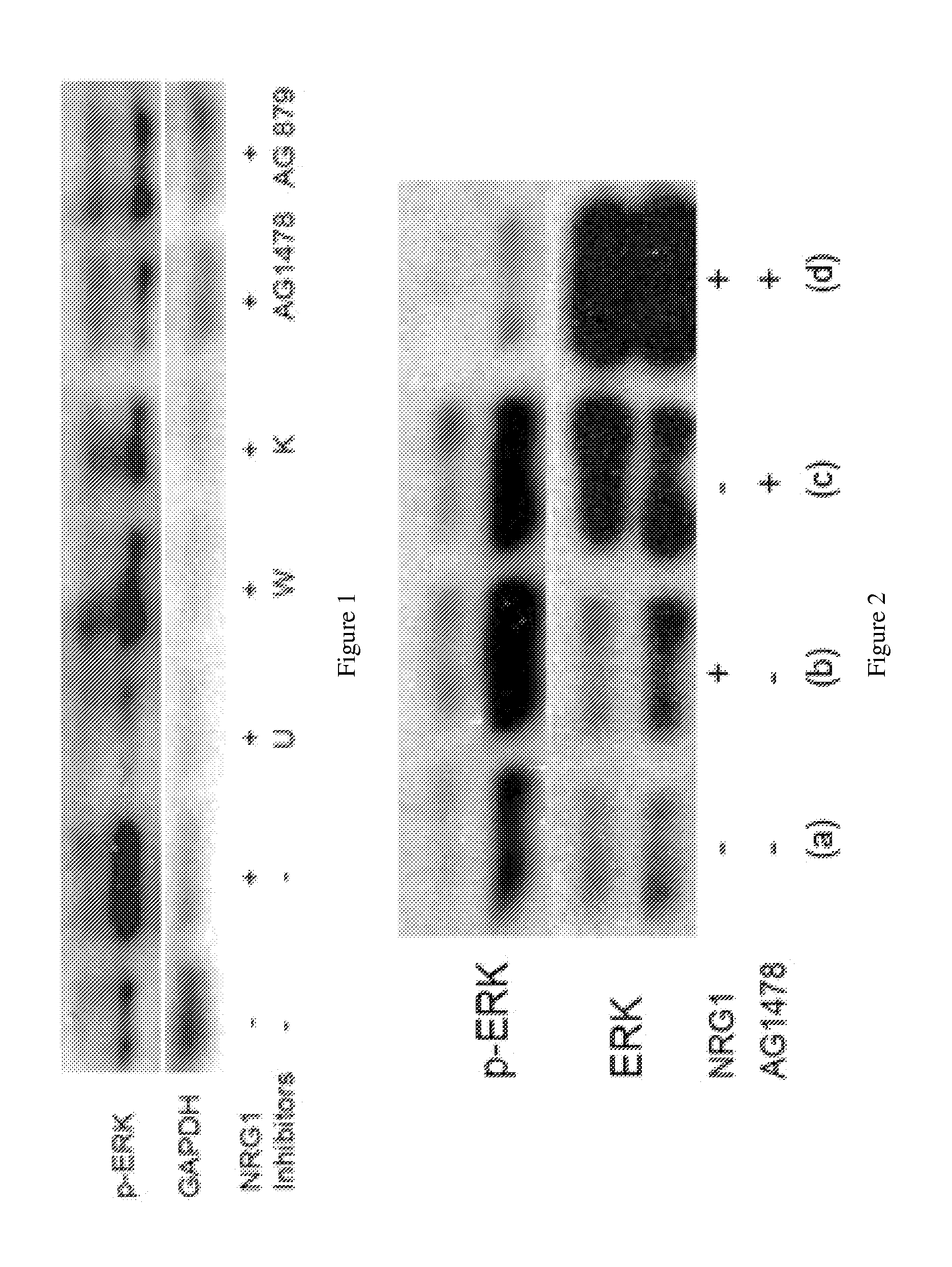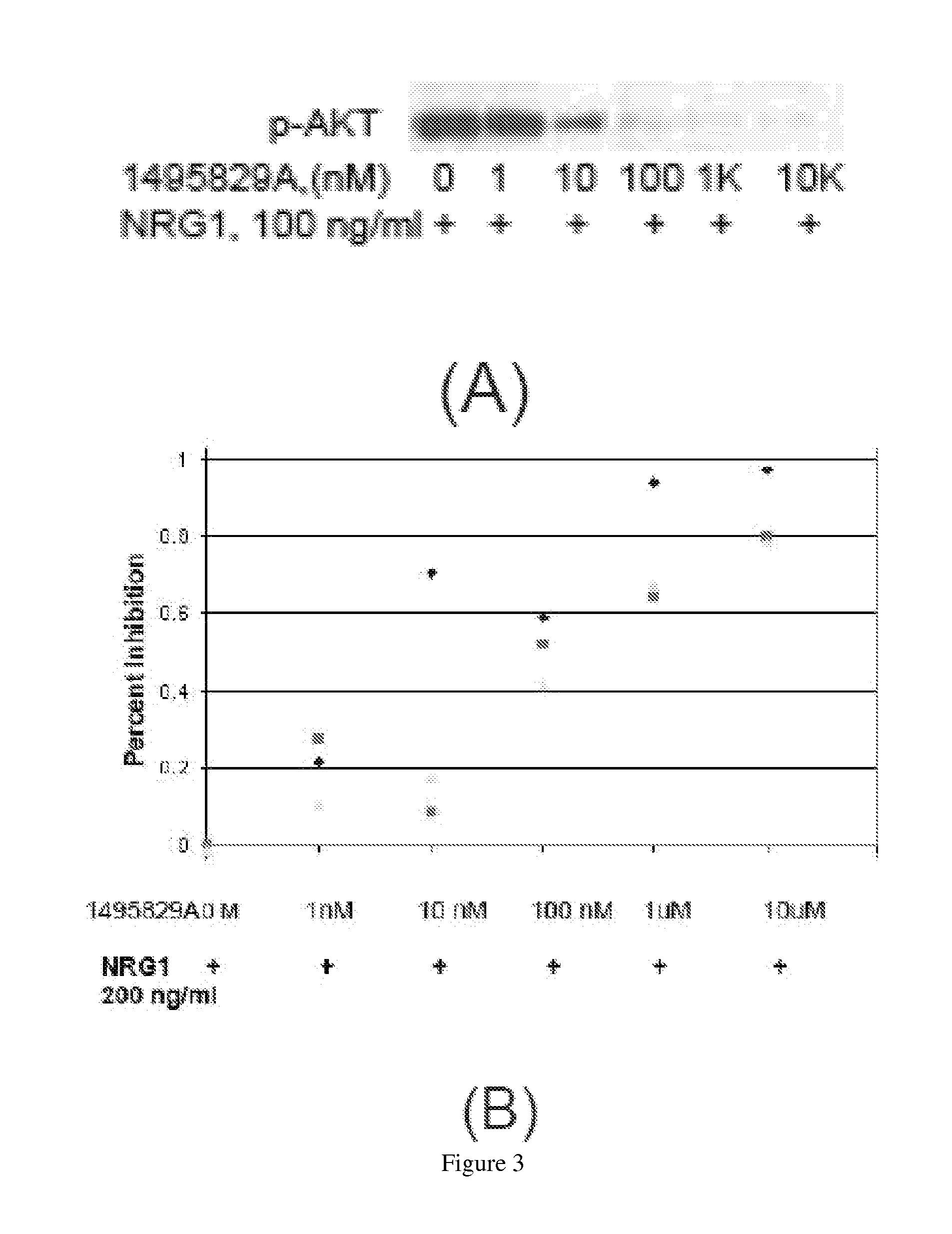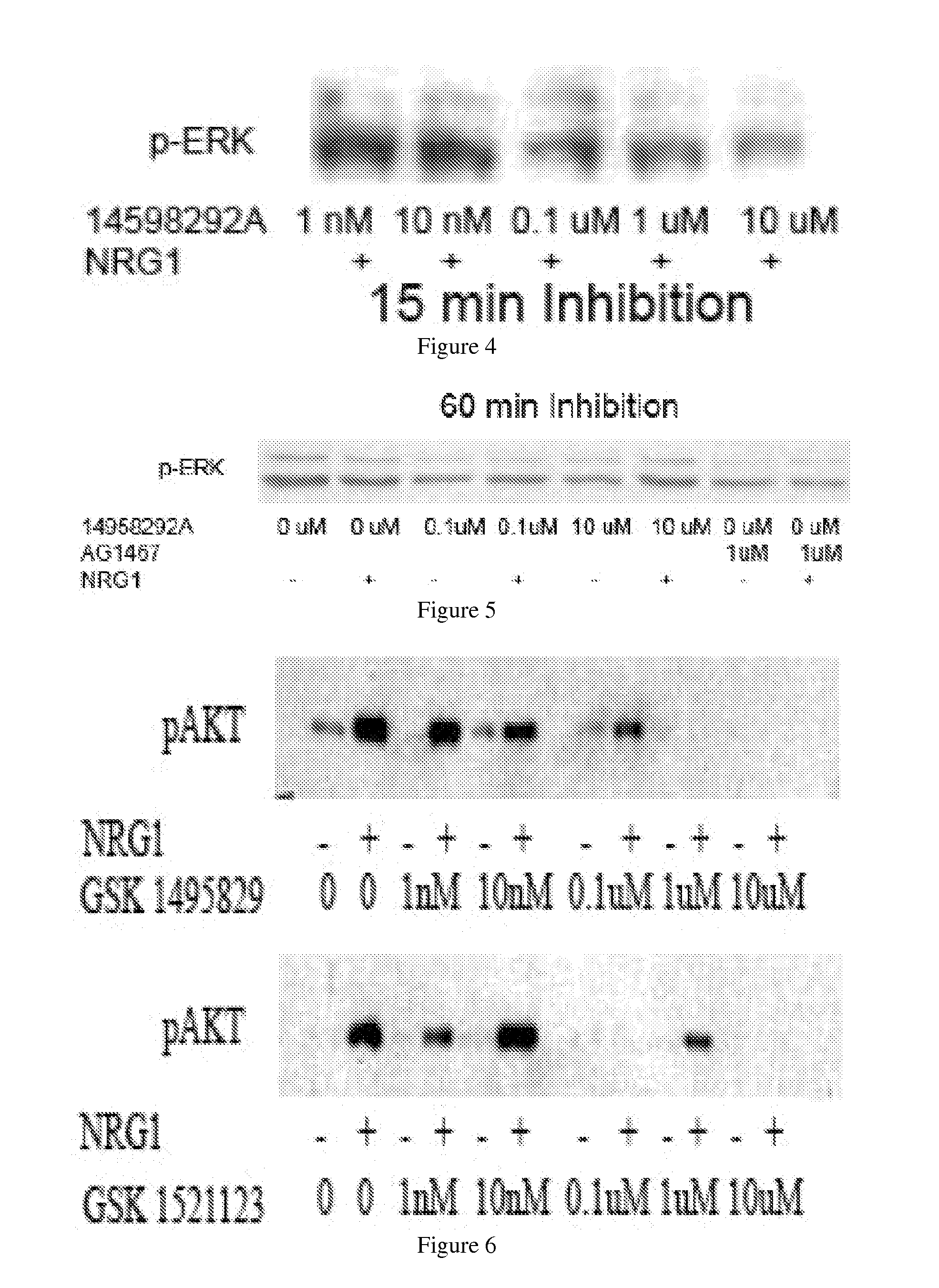Erbb4 inhibitors and uses thereof in treatment of neuropsychiatric disorders
a neuropsychiatric disorder and inhibitor technology, applied in the field of neuropsychiatric disorders, can solve the problem that nrg1 has no specific role in schizophrenia
- Summary
- Abstract
- Description
- Claims
- Application Information
AI Technical Summary
Benefits of technology
Problems solved by technology
Method used
Image
Examples
example 1
Agents Inhibit Contact of erbB4 and NRG1 in Postmortem Brain of Schizophrenia Patients
[0112]The main goal of this Example was to test a small molecule compound that is a specific erbB4 inhibitor recently developed, for its abilities to inhibit NRG1-erbB4 activation and to modulate NMDAR signalling in the brains of schizophrenia patients. To that end, it was proposed to test this compound in the post-mortem brains of SCZ subjects. The objectives set was to establish the experimental paradigm, combining pharmacologic inhibition experiment with the stimulation paradigm in the post-mortem tissues. In addition, the experimental paradigm was extended to an in vitro neuroepithelial system, olfactory epithelial cultures.
[0113]For an in vitro system, human olfactory epithelial (hOE) cultures were chosen, developed by applicant. These neuroepithelial culture are thought to contain some of molecular and cellular characteristics of an individual. It is an important addition to test the effects ...
example 2
GSK1495829A inhibits NRG1 Induced Signalling in Human Olfactory Neuro-Epithelial (hOE) Cultures in a Dose Dependent Manner
[0119]To test the potency and the dose-response relationships for GSK1495829A, first hOE culture cells were employed. hOE culture cells derived from a healthy subject, 43 year old African-American male, were grown to confluence and were deprived of serum for 4 hours. Culture cells were then incubated with varied concentrations of GSK1495829A and GSK1521232A for 15 min and subsequently added with 100 ng / ml of NRG1. Tissue extracts were then analyzed by immunoblotting for the downstream signalling mechanisms, ERK and AKT.
[0120]As shown in FIG. 3A, a representative blot, GSK149829A inhibited NRG1 induced activation of AKT in a dose dependent manner. A similar dose response curve was also shown for the activation of both AKT or ERK (FIG. 3B).
[0121]GSK1521232A appeared to differ from GSK1495829A in its capacity to inhibit NRG1 signaling. In three separate experiments...
example 3
GSK1495829A Inhibits NRG1 Induced Signalling in Postmortem Human Prefrontal Cortex Tissues in a Dose Dependent Manner
[0122]GSK1495829A was tested in post-mortem mouse and human brain tissues. FIG. 4 represents an experiment, in which the PFC tissues of a healthy control subject were pre-incubated with varied concentrations of the inhibitor for 15 min before the ligand stimulation with 100 ng / ml of NRG1. While GSK1495829A clearly inhibited ERK activation in post-mortem brain tissues, the extent to which NRG1 induced ERK activation was reduced was not as robust as in OE culture cells. One possible explanation could be that the brain tissues are less permeable to the inhibitors than OE culture cells.
[0123]To enhance the permeability of the inhibitors, tissue slices were pre-incubated with the inhibitors for 60 min before added with NRG1. In any event the 10 μM concentration of GSK14958292A did not reduce the activation of ERK or AKT, nor did AG1467 (FIG. 5). It is also of note that NRG...
PUM
 Login to View More
Login to View More Abstract
Description
Claims
Application Information
 Login to View More
Login to View More - R&D
- Intellectual Property
- Life Sciences
- Materials
- Tech Scout
- Unparalleled Data Quality
- Higher Quality Content
- 60% Fewer Hallucinations
Browse by: Latest US Patents, China's latest patents, Technical Efficacy Thesaurus, Application Domain, Technology Topic, Popular Technical Reports.
© 2025 PatSnap. All rights reserved.Legal|Privacy policy|Modern Slavery Act Transparency Statement|Sitemap|About US| Contact US: help@patsnap.com



